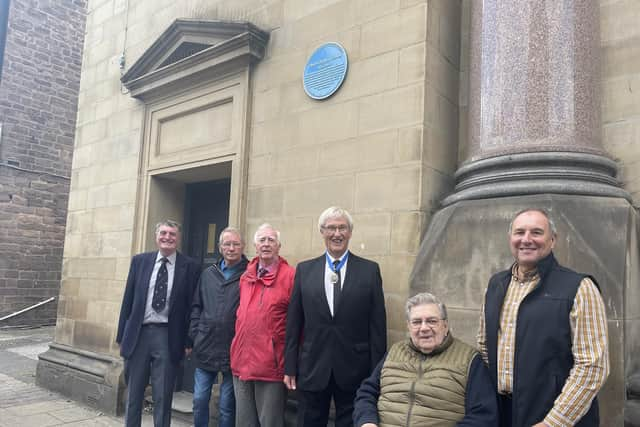Blue plaque to commemorate Rotherham-born tutor to Grand Duchess Anastasia Nikolaevna unveiled
and live on Freeview channel 276
Charles Sydney Gibbes served as the English tutor to the children of Emperor Nicholas II of Russia, including his youngest daughter, Grand Duchess Anastasia Nikolaevna, from 1908 to 1917.
Mr Gibbes, who was born in Rotherham, worked at the British Embassy in China following the murder of the Romanov family in 1918, and became an Orthodox Monk in 1934, before his death in 1963.
Advertisement
Hide AdAdvertisement
Hide AdMr Gibbes’ father, John, was the manager of the Sheffield and Rotherham bank, from 1870 until around 1901.


The plaque was organised by The Rotherham District Civic Society, and funded by the Rotherham Grammar School Old Boys Association, where Mr Gibbes was educated.
Bernard Fletcher, of the Rotherham Civic Society said that the process had taken about 18 months, and that he is “relived and glad” the plaque is up to commemorate the life of Mr Gibbes.
In his speech during the plaque unveiling, Tim Mumford, president of the Rotherham Grammar School Old Boys Association paid tribute to Mr Gibbes’ “fascinating, interesting, and highly unusual career”.
Advertisement
Hide AdAdvertisement
Hide Ad“He was born here, he went to Grammar School, we think in the late 1880s, and left there about 1895.
“He went to Cambridge’s St John’s College, with a view to being a priest.
“He decided to teach English overseas – by 1908 he had come to the attention of the Empress Alexandra, and he was appointed as a tutor to the Tsar’s children.
“This continued until the February Revolution of 1917, when the family moved from St. Petersburg to Tobolsk.
“The following year, they were murdered.
Advertisement
Hide AdAdvertisement
Hide Ad“He did visit the scene of the execution shortly after, taking some memorabilia with him.
“He did a spell in Peking as it was, at the British Embassy, and then in the late 1920s came back to England, to London.
“He went to China, where he was eventually ordained in the Orthodox Church.
“He returned to England in the 1930s. he spent the rest of his life between London and Oxford until 1963 when he died in London, he is buried in Oxford.
“That’s a fascinating, interesting and highly unusual career.
“He deserves to be commemorated for such a varied and unusual career.”
